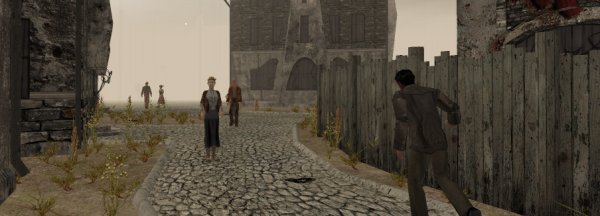As counterpoint to Michael’s post about not having games to play I thought I’d be more optimistic and point to some games that I am looking forward to playing when they’re released next year.
So far:
Flower (Playstation Network, thatgamecompany): We’ve played with an early version of this game some months back and it can give one a feeling of absolute euphoria. Floating along on a breeze, the controls felt just right even back then. It looks like some game-like elements have been added but I bet it won’t dull the primary effect putting you in a dream-like state and giving you a moment’s release from care.
Noby Noby Boy (Playstation Network, keita takahashi, Namco): something that looks this exquisitely insane has GOT to be good. I am also pleased that the designer doesn’t consider it to be a game. The aesthetic is fresh, the play looks open, I can’t wait.
Gyakuten Kenji/Miles Edgeworth Perfect Prosecutor (DS, Konami): Confession, I have played ALL the Phoenix Wright/Ace Attorney games. I find the writing to be on par with any television series. The stories are funny and tragic and sometimes a bit strange. Great character design throughout. A spinoff featuring Miles Edgeworth is a fabulous idea.
Calling (Wii, Hudson/Konami?): I’ve only seen (apparently leaked) videos on the net but this spooky game looks awesome! I hope to no end that it gets released outside of Japan. The interaction reminds me of a design we’d come up with for an unfinished game called “The Apartment.”
F.E.A.R. 2 (PC, Monolith): not because i will actually play the game (I cannot play FPS games) but because i think Alma (all grown up now) is the sexiest, most compelling, female character in action game history. What I do with games I can’t, or don’t want to, play is I look at clips on YouTube so I can skip the shooting and get to the good parts (which are the parts in-between the shooting usually.) The first F.E.A.R had some priceless moments. I’m hoping this one will be just as striking.
what can i say, i’ve got strange taste in women.
Tension/The Void (PC, Ice-Pick Lodge): Speaking of mysterious women, this game by our friends at Ice-Pick Lodge is intruiging. It’s getting a release outside of Russia courtesy of Atari. Good on them. While I’m not sure I’ll love the gameplay (but it could happen) I think it may have some interesting narrative resonance. I definitely am looking forward to fully exploring this world. I admire the character and environment design to no end.
Pikmin (WiiWare, Nintendo): i played this on gamecube and it remains one of my favorites. I think the addition of Wii controls will totally add. I’m looking forward to throwing the little guys around. Not so much to having them eaten, set on fire, blown away and rolled over by the garden’s creatures. But hey…
#1 game I’m looking forward to is: The Path (PC, Tale of Tales), of course. Because we’ve been making it for 2 years and having it done is the only thing I can really think of right now. Gaming comes *after*. So many hopes…

So, What games are YOU looking forward to playing?

